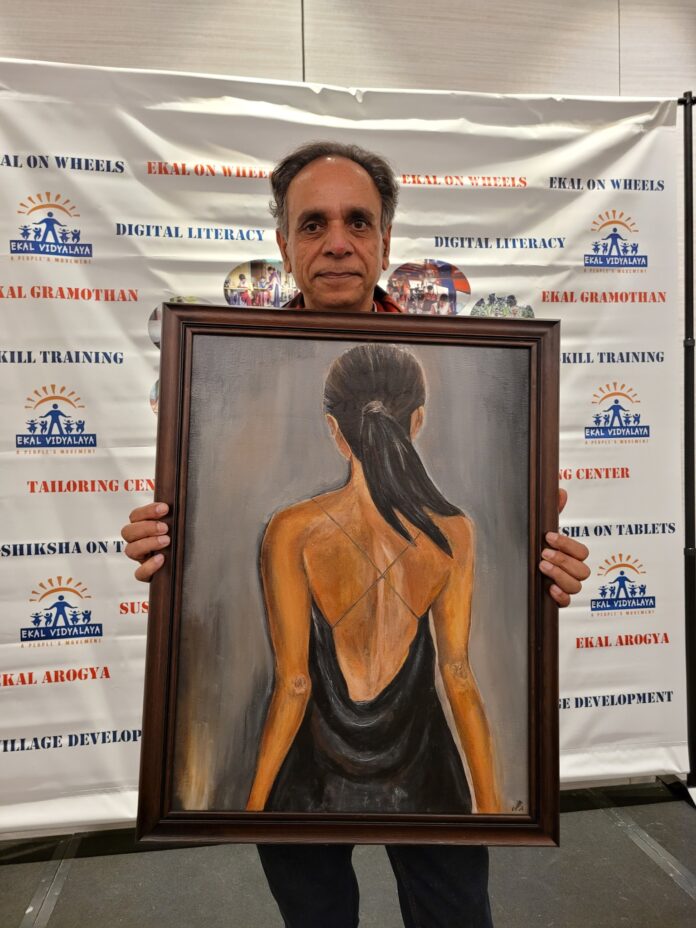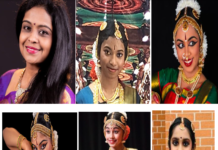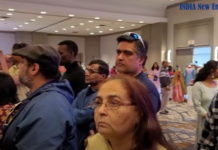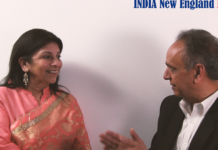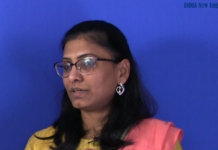By Upendra Mishra
BOSTON—An innocent dream forced me to revisit my fears recently. A few weeks ago, I had a dream that I was in a Barnes & Noble bookstore, and I was asking a sales associate to help me find some books on how to write books. Sounds strange: books on writing books.

When I woke up, this dream kept ringing in my head. It was a beautiful Saturday morning. I told myself that well, I will make this dream a reality. I rushed to a Barnes & Noble in Natick, MA, and went straight to a sales representative and said: “I am looking for books on how to write books? Can you please help me?” She did.
I picked about five books on writing. When I came home, I realized that I had mistakenly bought two copies of the same book. The next day, I went back to the store to return the extra one. As I was wandering in the store, I book caught my eye. It was entitled: “Feel the Fear…And Do it Anyway” by Susan Jeffers. I picked it up.
Sometimes even today at this ripe age, I get gripped by fear—whether it’s personal, professional, or business-related. Some of my dreams still dive deep into fear: not ready for an exam, failing in an exam, drowning in a river, earthquakes (I survived the big 1985 Mexico City earthquake), not enough money to pay the rent, and of course some fears with personal relationships (that I would not mention now—but maybe in a future column.)
As I began reading the book, one thing got stuck in my head: “It is reported that over 90% of what we worry about never happens.” The author also quoted Stoic philosopher Seneca from 2,000 years ago: “We suffer more often in imagination than in reality.” Then, the author rhetorically asked: “Things haven’t changed much over the past 2,000 years, have they?”
As I immersed myself in this book about fear, coincidently I had to go to a charity dinner where some paintings were being auctioned. I saw one piece of painting and instantly fell in love with it. Why? I loved the title and description of the painting, which basically spoke about the power of passion over fear. My brain, or sub-conscious mind, picked up on fear.
I posted the picture of that painting with my photo on Facebook. My phone rang the next day in the morning with a burst of laughter on the other side. I also started laughing without knowing what it was about. Then, my friend asked if I had paid attention to my picture with the painting. Of course, I said. “Did you see how it is perfectly aligned? she asked. I said: aligned with what? She asked me to look at the picture first and then call her back. I went back, looked at the photo and I called her back and could not stop laughing.
My wife also called a few hours later. She questioned my artistic judgement and said: “Why did you buy this painting? I don’t want to spend the rest of my life looking at the back of a woman.” Another friend texted me: “Very interesting pose. Reminds me of song: Tum aur main hum ho jate.” I began to think this is the beauty of art. We all interpret it in our own ways. The same thing is true about fear. We all perceive fear, feel it, experience it, and deal with it differently.
My transient obsession with fear made me think about my first fears. It took me straight back to my childhood mud house in my remote village in India where I grew up. There was no electricity those days. When it became dark after sunset, the only thing available to see through were earthen lamps burnt with kerosine oil. A little wind would often extinguish them.
I would always be gripped with ferocious fear when I had to enter the house after the sunset. Whether to enter the house or to come out, we had to cross a large windowless room/gallery that was mostly used for storage. Dirty, filthy, cobwebs everywhere and sacks of wheat, rice, tools, and everything you can imagine scattered all over. That was the scariest place to cross. When I was little kid, I would never enter that room (we used to call it dalan) alone. If I must, I would run those 10 feet at literally 100 miles an hour. I used to think ghosts (we called them bhoot) lived there, and they became alive during the darkness.
That dalan fear eventually went away as I grew up—maybe not until the age of eight or nine. At this stage, I started to go around the village and around the fields and mango orchards. There were some trees that we were told had been dwelled by ghosts. I would imagine all different types of scary faces of ghosts. There were also several areas in the village where hardly anyone went—especially alone. Even most adults believed in ghosts then. The trees that stood alone were often designated as ghost dwelling places. Moonless nights were the worst when the entire earth was engulfed with complete darkness. Any sound of animals will scare the hell out of me.
Like most kids in my village, I was also scared of snakes, especially during the monsoon season. We did not have toilets at home. We had to go out in the fields to do our daily business. During the rainy season, pools of water will be everywhere. Very few high spots would remain dry in the fields. That dry place would be the favorite of poisonous snakes too. While going out, I would always keep my eye on the snakes, especially after learning that one our neighbors had died because of snake bite.
The most scared and fearful, however, I was of “maat marna” or hijacking the mind. Every year, a group of nomads will visit our village in a group of 10 to 20 families. They along with their dogs, buffaloes, and other animals, would camp in one our mango orchards for a few weeks. During the day, their girls and ladies will beg or knit something. Men and boys would do some manual work or sell something—honey, farming tools and blankets etc.— to villagers. During the night, they would cook and sing. We, as kids, were not allowed to visit them or even go close to them.
I remember my grandmother and aunts giving me a stern warning of never talking to their women. Although I was still a kid, I was fascinated by features, beauty and artificial jewelry and clothes those girls and women wore. Their clothes were very colorful with a lot of handwork, and entirely different from what women wore in my village. Their jewelry pieces were huge—mostly made of brass and silver. They had gigantic dark eyes and long hair. What fascinated me was that they never wore any makeup. I still like women who look natural, and high make-up is a turn off.
One day I asked my grandmother why you don’t let me go near them. She said that those women have unique power, and they can use that to hijack your mind and steal you away from us. After what she explained, I became scared of these gorgeous people. One day I went to one of my mango orchards. It was mango season. I still remember the sunny, muggy, and sweltering heat. I must have been 10 or 11 and was walking home alone. On the way, there was a gigantic mango tree in someone else’s orchard. A beautiful lady from this nomad group was sitting in the shade of the tree. When she saw me alone walking in this baking heat, she asked me to not walk in the sun and stay under the shade. When I heard her talking to me, I was sure she was using her magical power to hijack my mind and that she would take me away. I started to run as fast as I could, came home and told my grandmother about what had just happened to me.
“See, I had told you that these women are jadugarini (magicians.) I am so happy that you ran away,” she told me and hugged me as if she was hugging a dead child who had come alive. At that time, I was so happy that I had listened to my grandmother and aunts. Now, of course, I think of the good heartedness of that so-called jadugarini and that baseless fear.
When I became a teenager, my childhood fears slowly vanished. But other fears gripped, mostly of doing good in college, finding a good job, losing a family member, or loved ones.
Many baseless fears still occupy my mind from time to time, but now I have learned to handle them. They come. I stop and think about them and then find out how to deal with them. They do not paralyze me anymore, or rather do not stay in my imagination a for a long period. They have also made me better at handling crisis. They have taught me to find joy in accepting fears and life challenges and dealing with them as they come.
(Mr. Mishra is managing partner of the Waltham, MA-based integrated inbound marketing and PR firm The Mishra Group. He writes about his three passions: marketing, scriptures, and gardening.)



